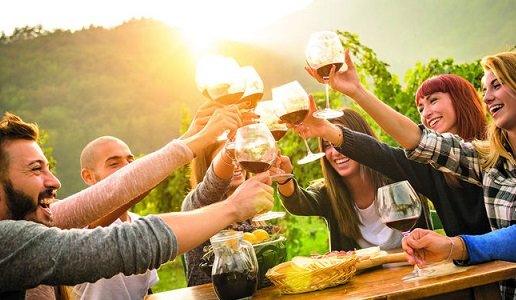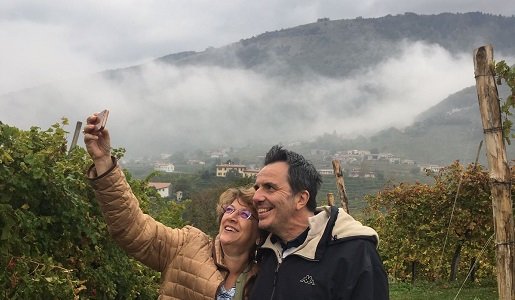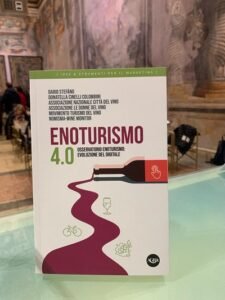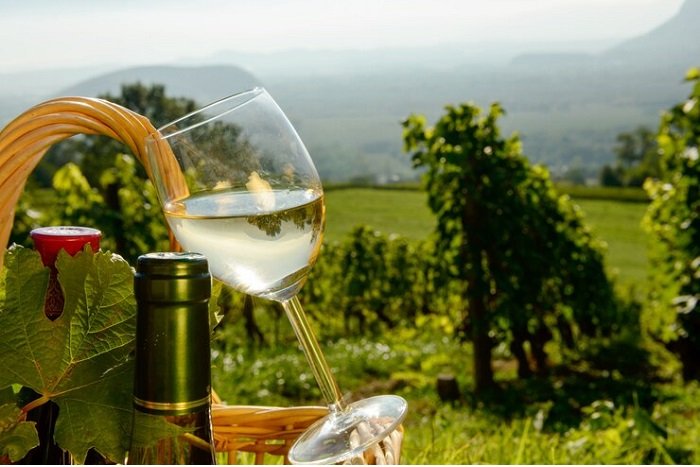This is custom heading element
In general, the production companies are small, 48 percent do not exceed 500,000 euros in annual sales. On average they have 15 employees of whom 3 are involved with wine hospitality. This service is entrusted, 73 percent of the time, to a woman while business management, despite the massive efforts of the Women of Wine Association in responding to questionnaires, is predominantly male (55 percent).
Italian tourism wineries accelerate in creating experiences but with 3 problems: remoteness of flows (32%), scarcity of contacts and few staff (74%). Wine tourism HUBs are still very rare, but they are beginning to be crucial to wine tourism success. These are super attractions such as experiential museums or wineries featuring extraordinary historical and monumental elements.
And again, in the face of a structural qualification of the wine tourism offer, in the sales points and tasting rooms, there remain some long-standing problems such as the repetitiveness of the proposals that in 96% of cases decline the guided tour to the production premises with small final tasting. As well as there remains the problem of accessibility on holidays and weekends i.e. when winery visitors grow. On Saturdays and Sundays half of the wineries are closed, and this percentage only goes up if we consider opening on demand. Therefore, 11% of reservations fall through the cracks.
Opening of Italian tourist wineries
 As has long been known, one of the problems of Italy’s tourist wineries is that they are open to the public with “clerical hours,” and the survey confirms this characteristic even though it shows a marked improvement: 75 percent of wineries are open Monday through Friday. On Saturdays, the percentages drop: 57 percent morning and 43 percent afternoon. Even on Sundays and holidays, half of the wineries are closed.
As has long been known, one of the problems of Italy’s tourist wineries is that they are open to the public with “clerical hours,” and the survey confirms this characteristic even though it shows a marked improvement: 75 percent of wineries are open Monday through Friday. On Saturdays, the percentages drop: 57 percent morning and 43 percent afternoon. Even on Sundays and holidays, half of the wineries are closed.
However, they increase the prices of activities offered by wineries including premium experiences above 100€ per person. They generate income that is still marginal compared to direct wine sales, which is 6-14% of the entire wine business and is the real wine tourism revenue.
Italian tourist wineries, after 2015, have greatly increased, diversified and structured ancillary offerings to the “basic” one consisting of the guided tour of the production facility concluded with the tasting of wines for sale, which is now present in 96 percent of wineries.
The growth of women in wine tourism hospitality
Women are growing in the Italian wine production sector. “Women working in Italian wineries are closer to parity in wages and careers than those in other economic sectors,” says Donatella Cinelli Colombini, author and wine producer – because they preside over the new areas of wine: commercial (51 percent), marketing and communication (80 percent) finally wine tourism (76 percent). Conversely, in the vineyard and winery they are in the minority (14 percent). We can therefore say that men make the wine and women sell it“.
 A statement that says a lot about the new prominence of women in the wine industry and to which corresponds a Increasing weight of women in purchasing and winery visit decisions. “Globally, the majority of wine is bought by women” who are also beginning to become important as buyers and consumers of expensive wines. They drink wine more occasionally and related to sociability than men in addition to a more economical and pragmatic buying behavior. The woman thinks about the use that will be made of the wine especially in relation to food pairing. Therefore, in the future, we will have sales shelves organized differently, with more carefully packaged bottles and colors such as red, purple, and pastel.
A statement that says a lot about the new prominence of women in the wine industry and to which corresponds a Increasing weight of women in purchasing and winery visit decisions. “Globally, the majority of wine is bought by women” who are also beginning to become important as buyers and consumers of expensive wines. They drink wine more occasionally and related to sociability than men in addition to a more economical and pragmatic buying behavior. The woman thinks about the use that will be made of the wine especially in relation to food pairing. Therefore, in the future, we will have sales shelves organized differently, with more carefully packaged bottles and colors such as red, purple, and pastel.
Absolute protagonists in wine tourism
But it is in wine tourism that women are the absolute protagonists, which explains the presence of the chapter devoted to them in the volume “Enotourism 4.0.“. Only 9 pages but they are the first to detail the female profiles of those working in the production or commercial sectors and those who consume wine. Even among wine tourists and especially among those who book a winery visit online (66 percent), women are the majority. A change in customs that is happening all over the world and not just in Italy.
Overall, the growth of the female role is a tonic for Italian wine and for agriculture as a whole, where 28 percent of businesses have a female owner. Farms that are shown to be not only more profitable (the 21 percent of rural area they manage produces 28 percent of agricultural GDP) than those of the stronger sex, but also an expression of a new business model, that is, more environmentally friendly, internationalized, quality-oriented and production diversification.
The communication of Italian tourist wineries
 Ninety-nine percent of the wineries surveyed have websites but the number of monthly hits exceeds 1,000 per month in only 34 percent of cases. 49% of companies inform their followers about news at least once a month. While the presence of a blog (24 percent) or newsletter (48 percent) is low , the presence in social media is plebiscite (99 percent). On Facebook, the average number of followers is 8,585 while it is halved in Instagram and still drops a lot in Linkedin and Twitter.
Ninety-nine percent of the wineries surveyed have websites but the number of monthly hits exceeds 1,000 per month in only 34 percent of cases. 49% of companies inform their followers about news at least once a month. While the presence of a blog (24 percent) or newsletter (48 percent) is low , the presence in social media is plebiscite (99 percent). On Facebook, the average number of followers is 8,585 while it is halved in Instagram and still drops a lot in Linkedin and Twitter.
These are the most critical elements for wineries considering opening up to ‘e-commerce. In fact, if social channels manage to keep alive the relationship with a part of their visitors, they are not enough for companies to make a real online business out of bottle sales. The numbers are too small relative to the wine tourism flows that could generate the contacts. This is no small issue as the desire to sell one’s wine online grows. Very few wine businesses in the Northeast have shopping carts but 63 percent of those in the Center and 58 percent of those in the South and Islands have E-commerce.
Types of Italian tourist wineries
Based on their strength in wine tourism offerings, 98% of Italian wineries can be identified in 6 types.
- Small winery with family hospitality (39%)
- Winery with historical, architectural or artistic significance (14%)
- Famous brand/historic brand (12%)
- Winery with scenic or naturalistic significance (11%)
- Winery organized for incoming (11%)
- Winery with innovative offerings (11%)
Location of wineries with respect to tourist and wine tourism flows
From the survey Nomisma Wine Monitor A picture emerges that describes the need for a portion of the wineries to Support an additional effort to attract wine tourists to the area: 32% of them are not in the directrix of tourist or wine tourism flows so they cannot intercept visitors passing nearby but must take actions to draw them back. Only 24 percent are located where there are wine tourists, while 44 percent enjoy the presence of streams that may not be interested in wine but still constitute an interested catchment area.
The top 8 wine tourism proposals in Italy
According to the Nomisma-Wine Monitor survey, the main wine tourism proposals of Italian wineries are as follows:
- Wellness and Relaxation: 64 percent of wineries have a green area for relaxation, but some also have facilities for natural wellness such as massage and wine therapy.
- Entertainment: adult entertainment activities 64% and fun-type events (17%) predominate while children’s entertainment (6%) is scarce
- Meal delivery: on this front the acceleration after 2015 was very strong and now 72% of wineries are able to accompany their wines with food even though actual catering is present in only 26% of cases. More than half of the businesses have an equipped outdoor area, which, as everyone noted at the covid, is enormously liked by wine tourists especially if it is scenic. Dining with the winemaker is possible in 37% of wineries
- Culture: even on cultured proposals the increase has been very strong in recent years. Almost half of the businesses also suggest that their visitors go to nearby events or cultural attractions. Forty-three percent organize their own exhibitions, concerts or cultural events, and 38 percent offer historical or artistic tours. Then there is a 20% that has its own museum or educational infrastructure.
- Sports: there are those who have created routes for hiking (44%), biking (35%), or horseback riding (13%), those who jog in the vineyard (18%), and those who have a swimming pool (14%)
- Experiential and educational offerings: This section includes all those activities that, patented by wine, become something more structured such as events organized by 77 percent of businesses, educational tastings (70 percent), themed events (65 percent), nature walks (36 percent), cooking classes (36 percent) and wine weddings (34 percent). All of these experiences had increases of more than 30 percent after 2015.
- Receptivity: given the 2022 success of the “vineyards” proposition in Airbnb where Italy ranked second in Europe after Spain and Tuscany’s “vineyard view” bed bookings pushed this region to third place overall …exponential growth in receptivity in wineries was to be expected. Actually there is but not so huge. Wine businesses offering overnight accommodations are 32 percent, RV pitches are 28 percent, and wine-themed proposals are 23 percent.
- Traditional offering: also grew after 2015 but starting from higher percentages than the other experiences. The guided tour with final tasting, which is present almost everywhere, is now joined by themed tastings (78 percent) and vineyard education (73 percent).
Human resources and employee training in Italian tourism wineries
This is the third and biggest problem of tourist wineries highlighted in every detail by the survey conducted by Denis Pantini and Roberta Gabrielli for Nomisma-Wine Monitor. The need for staff is growing but the difficulty in finding them is increasing exponentially and is perceived by 74 percent of Italian wineries with particular severity in Veneto (92 percent), Sicily (89 percent), Friuli Venezia Giulia (83 percent), Puglia (83 percent), Piedmont (80 percent) and Umbria (75 percent).
Let us now see which professionals are most sought after in Italian tourism wineries and to what extent this need is being filled.
- 98% multi-language staff, already present in 90% of wineries;
- 97% guides for tastings or vineyard cellar tours, already present in 91% of wineries;
- 85% sommeliers, already present in 69% of cases;
- 79% agricultural technicians, already present in 67%
- 65% chefs for catering part of kitchen, already present in 34%
Crucial issues concern the skills required for wine hospitaliaty, elements that, wanting to look farther afield, also define the professional profile of employees and the subjects to be taught in their training. However, the need to work on holidays is definitely the biggest obstacle to finding employees to hire.
The most difficult characteristics to find in tourist winery workers
Going to look at the data divided by geographical areas, it is possible to see that the difficulty in finding trained personnel is particularly severe in the Northeast while the South lacks polyglot personnel.
- Knowledge of foreign languages (98%)
- Willingness to work on weekends (94%)
- Wine and vineyard skills (94%)
- Sales Technique (92%)
- Skills in digital communication and social media (93%)
- Skills on typical local products (93%)
- Skills in wine tourism marketing (92%)
- Expertise on tax and legal regulations (63%)
The need to address staff training gaps has prompted a growing number of businesses (65 percent) to invest in in-house skills in order to increase the performance of wine hospitality services, increase flows, anticipate new trends and build visitor loyalty by turning them into returning customers and consistently buying wines.
The handbook “Wine Tourism 4.0 – Wine Tourism Observatory: Evolution of Digital”
 Written in four hands by Dario Stefàno and Donatella Cinelli Colombini with contributions from: Le Donne del Vino, Movimento Turismo del Vino, Città del Vino, Nomisma Wine Monitor, the handbook is the most extensive and documented analysis of Italian wine destinations, i.e., cities and wineries, which were surveyed by Nomisma Wine Monitor on a participated sample of 145 municipalities and 265 businesses.
Written in four hands by Dario Stefàno and Donatella Cinelli Colombini with contributions from: Le Donne del Vino, Movimento Turismo del Vino, Città del Vino, Nomisma Wine Monitor, the handbook is the most extensive and documented analysis of Italian wine destinations, i.e., cities and wineries, which were surveyed by Nomisma Wine Monitor on a participated sample of 145 municipalities and 265 businesses.
In addition to statistical data and commentary on the snapshot of industry dynamics, “Oenotourism 4.0” contains lunges that are meant to represent some User manuals for Wine City tourist offices and wineries open to the public. The focus, explained in these sections by Donatella Cinelli Colombini, is on the meaning and functioning of the wine club and on the benefits of coordinated use of the social networking and technology to expand the followers that are its main user base, as well as for its proprietary e-commerce. A set of valuable guidelines for those who wish to expand their business vision from those who experience the latest in wine hospitality in the field.




